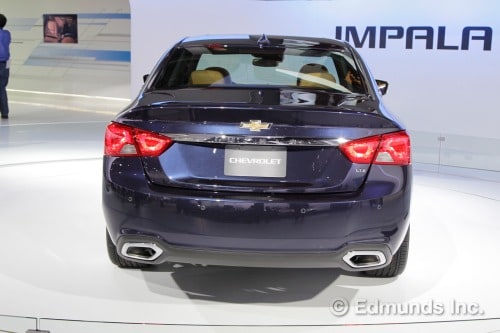I took a look at a new Impala this morning, and I have to give GM props for the nice job they did on the body assembly. All of the panel gaps were small, the trim alignment was good, the doors shut tightly. The car looked expensive, even though it is a Chevrolet and not an Audi.
This car is a huge improvement over the car it replaces, the ancient w-body based 2006-2013 Impala. That car was so out of date, it was difficult for me to understand why anyone but fleets purchased it. And even the fleets had better choices.
The styling of the 2014 is clean, with a little sculpture and a little chrome, but a tasteful amount.

(Photo courtesy of Edmunds.com)






























































